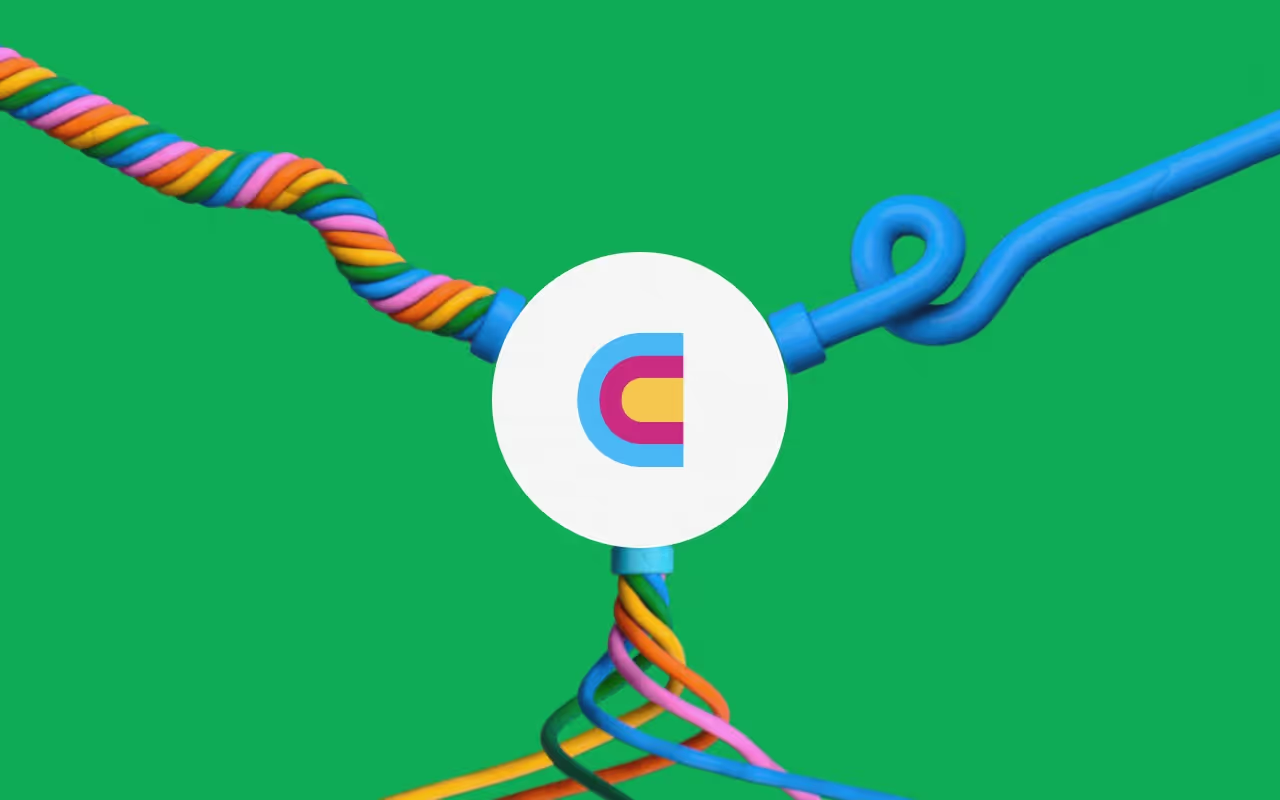In today's lesson, we're diving deep into web intent tracking. Web intent is one of the most POWERFUL signals you can capture in Clay. This feature allows you to transform anonymous website visitors into qualified prospects by understanding exactly who's engaging with your content and how they're behaving on your site.
🎯 Understanding Web Intent Fundamentals
Not all website visitors are created equal. Rather than tracking every single person who lands on your homepage (which would be expensive and noisy), you should focus on high-intent behaviors that predict buying interest.
Consider these differences in visitor behavior:
Someone spending 30 seconds on your pricing page and visiting case studies shows strong buying intent
Versus…
Someone bouncing off a blog post after 5 seconds shows minimal interest
Web intent tracking helps you identify these high-value accounts. Then you can use Clay to:
- Score accounts based on their engagement
- Route them to the right sales reps
- Create personalized outreach sequences while their interest is hot
🛠️ Setting Up Web Intent Tracking
Getting started with web intent tracking is straightforward:
- Click on your workspace name in the bottom left corner of Clay
- Select "Settings"
- Navigate to the "Integrations" tab
- Scroll down to find "Website Tracking"
- Click "Add Connection" to create your first website tracking connection
- Copy the JavaScript tracking snippet provided
- Paste it into the
<head>section of your website
If you're using platforms like Webflow, WordPress, or Shopify, paste this into your custom code section. Or if you have a dev team, send them this snippet—installation takes less than 5 minutes.
Once installed, Clay will automatically start capturing visitor data. The good news: none of this costs any credits. You only use credits when you choose to de-anonymize specific accounts.
🔄 Configuring Data Providers
Next, configure which data providers will help identify your anonymous visitors. Clay offers recommended providers, but you can customize based on your needs and budget
Each provider has different coverage rates and pricing models:
- People Data Labs and Versium offer broad coverage
- Clearbit specializes in B2B tech companies
- Snitcher has strong European coverage
As always, Clay loves a waterfall approach 😍 If you leave on “Recommended”, Clay will try your first provider, and if it can't identify the visitor, it automatically falls back to your second provider, maximizing your identification rate.
IPs are cached for 30 days, so you're only charged once even if the same visitor returns multiple times within that window.
🧠 Setting Up Intelligent Filters
This is where you control your costs and focus on high-value visitors. You don't want to enrich every visitor from every country visiting every page.
Set up filters that match your ideal customer profile, for example:
- Geography filters: Select your target countries (e.g., US, Canada, UK)
- Page exclusions: Exclude low-intent pages like blogs, documentation, or careers pages
- Add URL patterns like
/blog/*,/docs/*, or/careers/*
- Add URL patterns like
- Minimum thresholds: Only track visitors who:
- Spend more than 10 seconds on your site
- Come from companies where you've seen at least 2 sessions in the past week
These filters act as a pre-qualification layer, ensuring you only spend enrichment credits on visitors who are actually evaluating your product.
📊 Piping Data into Clay Tables
Now that your tracking is configured, let's get this data into Clay:
- From any Clay table (or create a new one), click "Add source" in the top left
- Select "Signals"
- Click on the "Website" section
- Select your website connection
- Configure your filters for targeted campaigns
For example, to build a table for high-intent pricing page visitors:
- Set filter: Pages visited contains
/pricing - Add filter: Time on page is greater than 30 seconds
- Add filter: Session count is greater than 2 over the past 14 days
- Set your time window to track activity from the last 14 days
Click "Save and add to table" and Clay will automatically populate your table with companies matching these criteria.
📈 Understanding Your Web Intent Data
Once data starts flowing in, you'll see several key columns automatically populated:
- Company name and domain - who visited your site
- Session count - how many times they've visited
- First seen date - when they first hit your site
- Pages visited - the specific URLs they viewed
- Time on site - total engagement duration
- Referral source - where they came from (Google, LinkedIn, direct, etc.)
- Geographic data - city, region, country
Click into any company row to see the detailed session timeline, showing the complete journey: which pages they visited, in what order, how long they spent on each page, and their referral source for each visit.
This data is powerful for personalization - instead of generic cold emails, you can reference specific content they engaged with and tailor messaging to their demonstrated interests.
Next let’s cover three use cases for Web Intent:
- Account-Based Marketing
- Automated Sales Alerts
- Personalized Outbound Sequences
💡 Use Case 1: Account-Based Marketing with Intent Scoring
You can combine web intent with account scoring to power your ABM motion.
Pro tip: Keep your account score separate from your intent score. They tell you different things and change at different rates:
- Account score: Based on firmographics (company size, industry, revenue, tech stack) - static attributes defining your ICP
- Intent score: Purely behavioral - tracks what prospects are actually doing on your site
A company might be a perfect fit based on firmographics but show zero intent signals. Or you might see massive intent spikes from companies that don't perfectly match your ICP but could still convert.
To calculate an intent score:
- Add a Claygent enrichment column called "User Research Intent"
- Have it categorize pages visited into meaningful buckets:
- Pricing
- Blog and Education
- Product Features
- Customer Stories
- Contact or Demo
- Homepage
- Calculate engagement metrics for each category
- Extract key themes from URLs visited (e.g., "AI for sales," "Salesforce integration")
- Build an intent score on a 0-100 scale:
- Start with 20 points if they viewed pricing or contact pages
- Add points based on time spent (e.g., 10 points per 30 seconds on pricing)
- Set run conditions to only trigger when someone has visited 3+ unique pages
The output gives you a quantitative score for prioritization, a qualitative summary for context, and clear segmentation to route prospects appropriately.
🔔 Use Case 2: Automated Sales Alerts with Context
Once you have scoring in place, get this intelligence to your sales team:
- Set up a Slack integration that pushes high-intent accounts directly into your sales channel
- Add enrichments to find the company's tech stack, recent funding, and employee growth trend
- Use a formula column or AI to compile all of this into a clear, actionable message
Instead of "Company X visited pricing page," your Slack alert could read:
🔥 High Intent Alert: Company X
- 500 employees, $50M revenue, uses Salesforce
- Visited pricing 3x this week
- Downloaded ROI calculator yesterday
- Intent score: 85/100 | Account fit: 92/100
Suggested action: Sarah should follow up referencing their pricing research and ROI analysis.
You can also add an enrichment column that pulls in your CRM lookup to check if this account already exists in Salesforce or HubSpot. If it does, pull the account owner, opportunity stage, and any open deals. If not, create a new opportunity.
✉️ Use Case 3: Automated Outbound Sequences with Behavioral Personalization
The third use case takes it a step further by automatically identifying the right people to contact and building personalized outreach:
- When a high-intent account hits your threshold, trigger a waterfall of "Find People at Company" enrichments
- Look for relevant titles (VP of Sales, Head of Marketing, Revenue Operations Manager)
- Set seniority filters to start with C-suite, then fall back to VP level, then Director level
- Limit results to 1-2 people per company to keep outreach focused
- Enrich contacts with verified emails, LinkedIn profiles, and recent activity
Use the behavioral signals to craft messaging that speaks directly to what prospects are researching:
- If they spent time on integration pages, mention how your tool connects with their existing stack
- If they downloaded a pricing guide, lead with ROI and implementation timelines
- If they visited security documentation, address compliance and data protection
Set up a Claygent prompt that takes the pages visited, time on site, and referral source, and generates 3-4 personalized talking points for truly customized first emails.
For example:
- The CTO gets messaging referencing pricing research and addressing security concerns
- The VP of Sales gets messaging focused on revenue impact and sales team efficiency
- The Head of IT gets technical implementation details and compliance certifications
All of this happens automatically within minutes of the intent signal being captured, giving your sales team warm, qualified leads with personalized messaging ready to send.
For a deeper dive on personalization and Clay’s Sequencer, check out the lessons below:
🚀 What's Next
This is just the beginning of what's possible with Web Intent in Clay. As always, you can expect these features to get better and better as the platform evolves.
Connect, explore and learn together
Read our GTM blog, or try out our top Claybooks and templates to transform your growth ideas into outreach in minutes.





















